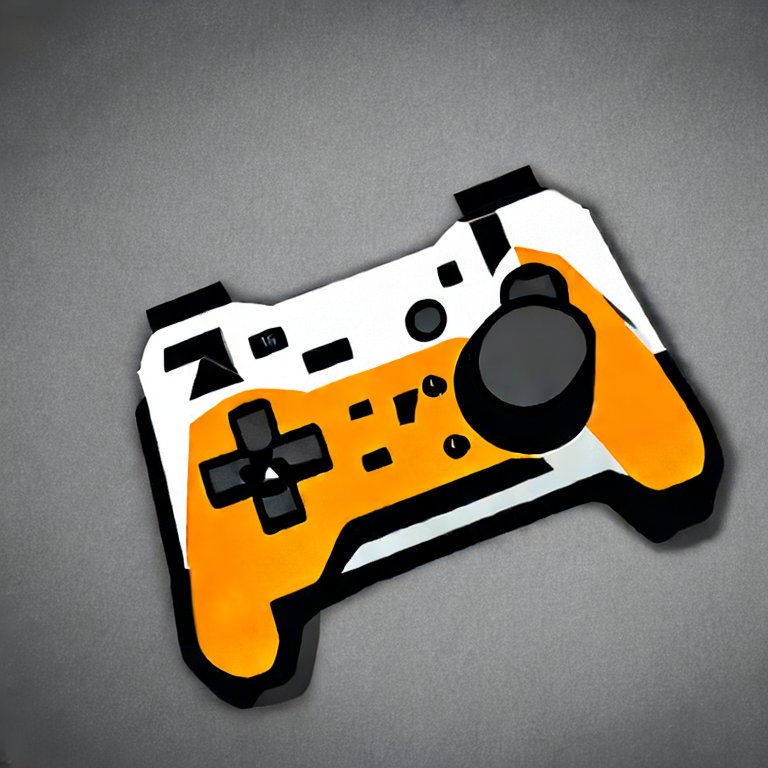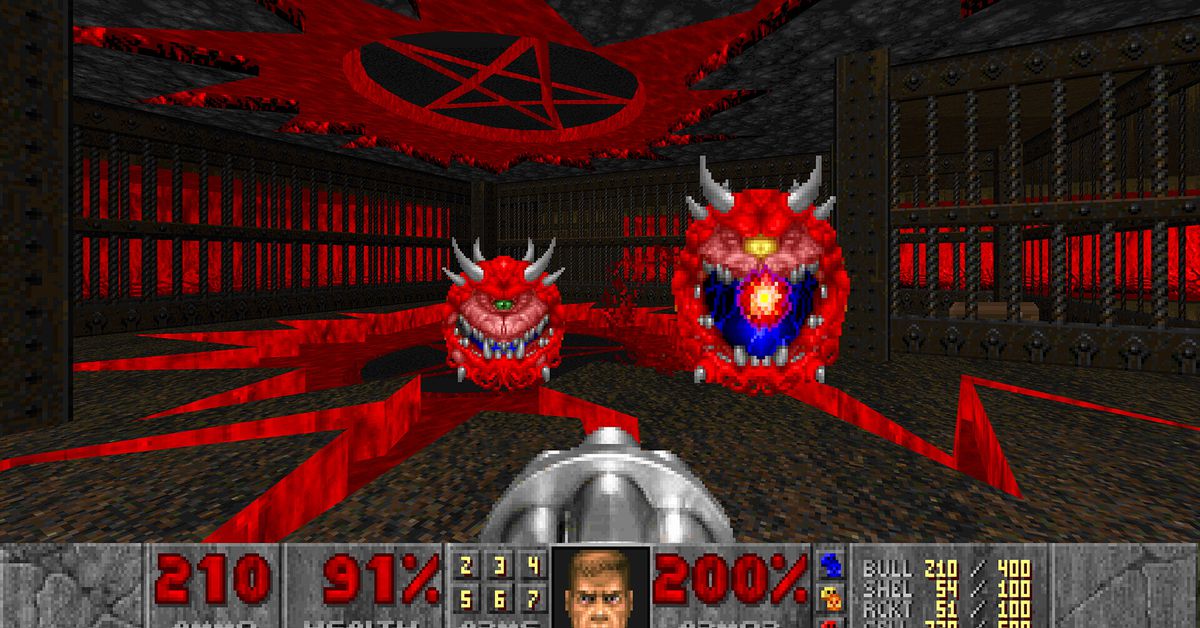

MHLoppy
Currently studying CS and some other stuff. Best known for previously being top 50 (OCE) in LoL, expert RoN modder, and creator of RoN:EE’s community patch (CBP). He/him.
(header photo by Brian Maffitt)
- 2 Posts
- 50 Comments
but the combat is a bit too hard for me
I haven’t really played since I was at most a teen so maybe the later battles aren’t actually as hard as I remember, but if this is a bottleneck then OP may find later sections of the game’s main story frustrating. I think the game itself is a good vibe fit and has broadly aged well, but something to keep in mind for OP!
This is a genuine question and not a passive aggressive one: why make the submission a link to a social media post when that post is mostly just a link to a news site anyway? (you could include link to or even quote the commentary either in the submission body or a comment if you think it’s a valuable addition)
edit: has since been answered in another comment orz, I opened this and then was talking to people for a while before commenting


Yo, don’t shit talk the makers of the award winning game Ricochet like that
I actually thought it looked pretty good because of Return to Monkey Island (which has never been bundled before and the ATL price of which is ~half the bundle’s cost). The average OpenCritic score (if that’s what you meant?) for the games excluding the Destiny 2 bundle is high 70s, and the average Steam review score is 83% positive. Seems fine to me but ymmv depending on personal preference I guess.


I honestly don’t think any of this matters anymore. SSD in general is just good for gaming
As the article shows, in some games it does matter enough to be probably something where you can “feel” the difference between a SATA vs NVMe SSD. There’s no need to guess or speculate here, the article has several measurements with differences that I’d consider a non-trivial between SATA and NVMe SSD speeds:
- 10 seconds difference (~50%) in first load time of Assassin’s Creed Shadows
- 10 seconds difference (~33%) in first load time of Black Myth Wukong
- 3 seconds difference (>50%) in quick travel load time in Indiana Jones and the Great Circle
- 15 seconds difference (~33%) in first load time of Kingdom Come Deliverance II
- 10 seconds difference (~50%) in load into game time of The Last of Us Part II
- 8 seconds difference (~70%) in first load time of Spider-Man 2
- 5 seconds difference (~80%) in first load time of Ratchet & Clank: Rift Apart
In several of these, the SATA SSD has performance similar to the hard drives, not to the NVMe SSDs. Of course, there are also many results where just having an SSD – regardless of what type – seems to be enough. Is it enough to justify upgrading an existing SATA SSD just for performance reasons? For most people, probably not - but it’s worth knowing what real difference there can be in real-world situations. It’s certainly nice to save a few minutes of cumulative load time every week if you play some of these types of games regularly though. (And for those with NVMe SSDs already, yeah, even in the above cases there seems to be only a trivial difference.)
I assume there will be some non-zero number of new releases making good use of DirectStorage, so if for anyone who tends to play new releases then it may matter increasingly more too, though it of course depends on what a person plays.
Nobody linking it!? https://store.epicgames.com/en-US/p/road-redemption-ce16fb


I’m sure everyone is for better treatment of developers but in the context of the movement they’re not important.
I’m not sure I agree with your premise. If developers with good work conditions had their say over whether games were killed or preserved, I think most would choose the latter. The two issues are perhaps not as insular as we wished they were for the sake of a clean and simple “message” for SKG.


Yes, it actually spends the majority of its word count on the Stop Killing Games movement as-is, then notes in a single section at the end that industry practices for developers are also killing games (since developers make the games). Thus if you support Stop Killing Games uppercase because you want the industry to stop killing games lowercase, reforming that part is important too.
FYI: OpenCritic average is moderately lower at (currently) 78/100 (82% recommend) https://opencritic.com/game/18413/tempest-rising


After many years of selectively evaluating and purchasing bundles as my main source of new games, I’ve come to wonder if it would’ve been better to just buy the individual games when I wanted to play them at whatever the available price was - the rate at which I get through games is far lower than the rate at which games are available in “good” bundles. In the end I’m not even sure if I’ve saved money (because of how many games have been bought but are as-of-yet unplayed) and it does take more time to evaluate whether something’s a good deal or not.
The upside is way more potential variety of games to pull from in my library, but if I only play at most like 1-2 dozen new games a year then I’m not sure that counts for much 🫠
Eh, I think that one’s mostly on the community / players giving up games as soon as anything bad happens (making the 30-70 and 40-60 games where you still have decent odds of winning more like 5-95 games which become a self-fulfilling prophecy), plus regular players getting better over time (mistakes and misplays are more likely to be punished and leads are more likely to be capitalized on).
The give-up culture wasn’t as bad much earlier in the game’s life, at least in my NA-centric exposure to solo queue.
Different people also have different sensitivity to different types of artifacts. No doubt a degree of the complaints is overblown due to a big of tribal / mob mentality going on, but a few of the people complaining might just be more sensitive to it.
With TAA specifically there’s probably also implementation differences going on, where someone has a bad experience with it once or twice and then generalizes that experience to all implementations of it.
Someone mentioned Neural Radiance Caching to me recently, which Nvidia’s been working on for a while. They presented about it at an event in 2023 (disclaimer: account-gated and I haven’t watched - but a 6-minute “teaser” is available: YouTube).
I don’t really understand how it works after having skimmed through some stuff about it, but it sounds like it could be one of several ways to improve this specific problem?


FYI if you’re one of the people who just sees an image, the original includes a link to this:


Rise of Nations (originally released back in 2003) had/has some interesting ideas to reduce some of the busywork:
- Worker units will automatically try to gather/build nearby after a short (configurable) delay if they’re not doing anything.
- Cities (the main worker-producing structure) has a rally point option that’s essentially “all nearby empty resource gathering”, so you can queue a dozen workers and they’ll distribute themselves as they’re created.
- Production buildings can be set to loop over their current queue, letting you build continually without intervention as long as you maintain enough resources each time the queue “restocks”.
- Units that engage in combat without being given an explicit target will try (with modest success) to aim for nearby units which they counter.
For the most part, none of the implemented options are strictly better than micromanaging them yourself:
- You will always spend less time idling workers if you micromanage them yourself.
- The auto-rally-point doesn’t always prioritize the resources that you would if you did it yourself.
- Queueing additional units is slightly less resource-efficient than only building one thing at a time.
- Total DPS is higher if you manually micro effectively.
But the options are there when you need them, which I think is a a nice design. It doesn’t completely remove best-in-class players being rewarded for their speed as a player, but does raise the “speed floor”, allowing slower players to get more bang for their buck APM-wise, and compete a bit more on the strategy/tactics side of the game instead.


There are types of time management which I think can still be interesting. For example, are you able to afford – in the resources of time and attention – optimally micro’ing this important fight? Or are you going to have to yolo it a bit so that you can do multi-task economic tasks at the same time?
Some (much?) of the problem is that (for better or worse) skilled players can and will squeeze the game to optimality in terms of win rate, and that tends to collapse viable tactical and strategic choices. Once those choices have been optimised (the game is largely “solved”), the main way to get better is by being faster, not by being smarter.


It’s normally negative, yeah, hence the “reverse review bombing” implying that they’re positive reviews.
My quote is not the only content of the video; I’ve just included most of the introduction. The 13:23 long video has the following chapter markers:
00:00 Introduction 00:50 How was DOOM originally described? 02:20 DOOM clones 04:33 Quake Killers 6:06 A hypothetical question 12:05 Conclusion
Only the first half of the video is accurately described by your suggested title. The video as a whole is described by the existing title with reasonable accuracy. It’s not a bait-and-switch: the video also discusses what genre DOOM is, not only what genre DOOM was.
It seems that you (and many others) have used a heuristic of “clickbait-y sounding titles don’t accurately describe the contents of videos” and left corresponding comments. Although often accurate, that heuristic has failed in this instance.
Then let’s transcribe part of the opening:
I know what you’re thinking – it’s a stupid question, it’s an FPS. It’s the definitive FPS. And it’s a fair point. DOOM ticks all the boxes required for a reasonable definition of a first person shooter. It’s presented from a first-person perspective, and shooting the bad guys is a key part of it. But the FPS genre didn’t exist when DOOM was released. The term “first person shooter” wasn’t common until a few years later.
So what genre was DOOM? How was it originally described?
Edit I’ve now understood that quoting most of the video’s opening salvo has unfortunately misrepresented the video’s contents to the people who are still trying to leave comments without actually watching it. It’s a video about what DOOM’s genre is and what DOOM’s genre was, not only the latter. The title looks clickbait-y but is honestly pretty accurate regarding the subject of the video.




Putting aside anything else, I doubt FTL meets the requirements just because it’s firmly on the hard side of things. Might be a good suggestion to check out for some others reading the thread though!